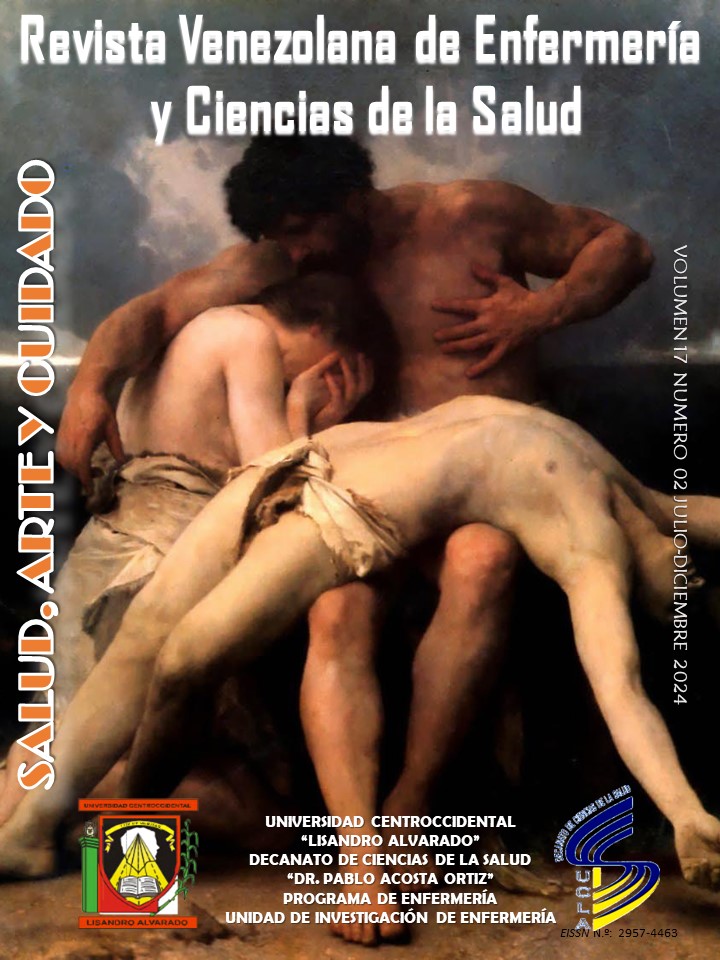Prevention of baby bottle syndrome
DOI:
https://doi.org/10.5281/zenodo.13147509Keywords:
dental caries, oral health, fluorineAbstract
Baby bottle tooth decay is a disease that mainly affects young children who are fed through a bottle, which has been prolonged, causing stagnation of milk or other sugary liquids in the child's mouth, combined with a lack of hygiene. oral, produces lesions, which lead to severe destruction of the tooth. Likewise, these injuries can be prevented by forming correct hygiene habits such as brushing teeth, using dental floss and mouthwashes, as well as a diet low in sugar and periodic visits to the dentist since it is important that the child receives sufficient amounts of fluoride. In this sense, if they are not prevented or treated, they can cause pain, partial or total loss of the tooth structure, along with the physical and psychological consequences that it brings. Now, childhood is a good age to educate and prevent dental caries, not only in biological aspects, but also in dietary and hygiene habits, since these remain throughout life.
Downloads
References
Ramírez B, Molina H, Álvarez L. Experiencia de caries en dentición permanente, en niños de 12 años, municipio de Andes (Colombia), 2012. Revista CES Odontología. 2013; 26 (2): 11-21.
Organización Mundial de la Salud. The World Oral Health Report 2003. Geneva, Switzerland: OMS; 2004. Disponible en: http://www.who.int/mediacentre/news/releases/2004/pr15/es/
Duque C, Mora I. La representación de la epidemiología de la caries en el mundo a través de mapas. Univ. Odontol. 2012; 31(66): 41-50.
Romero Y, Carrillo D, Espinoza N, Díaz N. Perfil epidemiológico en salud bucal de la población escolarizada del municipio Campo Elías del estado Mérida. Acta Bioclínica. 2016; 6(11): 3-24.
Campos et al. Prevalencia de caries en escolares atendidos bajo el programa de pasantías de la FOULA, Venezuela. Revista Venezolana de Investigación Odontontologica IADR, 2018; 6(1): 25-38.
Vita, Machiulskiene; Campus, Guglielmo; Carvalho, Johana. «Terminology of dental caries an dental caries management: Consensus Report of a Workshop Organized by ORCA and Cariology Research Group of IADR». Caries Research: 7-14. 2020. doi:10.1159/000503309.
American Dental Association (ed.). «Caries del biberón - American Dental Association». www.mouthhealthy.org. Consultado el 4 de diciembre de 2018.
Gil F. Sistemática de la higiene bucodental: el cepillado dental manual. Periodoncia y Osteointegración 2005; 15 (Nº 1) Fasc. 9:43-58.
Published
How to Cite
Issue
Section

This work is licensed under a Creative Commons Attribution-NonCommercial-ShareAlike 4.0 International License.
Derechos del/de autor/es a partir del año de publicación
Esta obra está bajo la licencia:
Creative Commons Reconocimiento-NoComercial-CompartirIgual 4.0 Internacional (CC BY-NC-SA 4.0)
Las opiniones expresadas por los autores no necesariamente reflejan la postura del editor de la publicación ni de la UCLA. Se autoriza la reproducción total o parcial de los textos aquí publicados, siempre y cuando se cite la fuente completa y la dirección electrónica de esta revista. Los autores(as) tienen el derecho de utilizar sus artículos para cualquier propósito siempre y cuando se realice sin fines de lucro. Los autores(as) pueden publicar en internet o cualquier otro medio la versión final aprobada de su trabajo, luego que esta ha sido publicada en esta revista.







